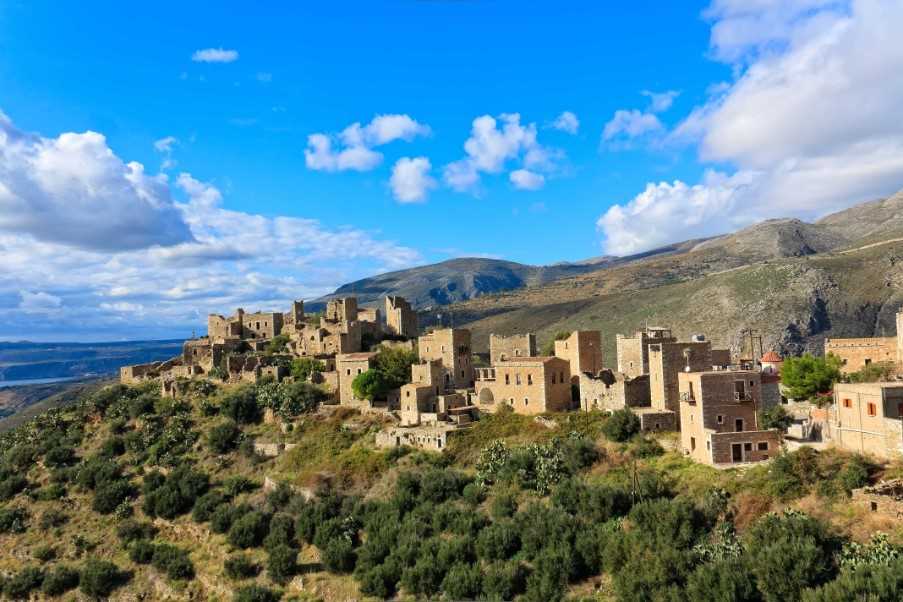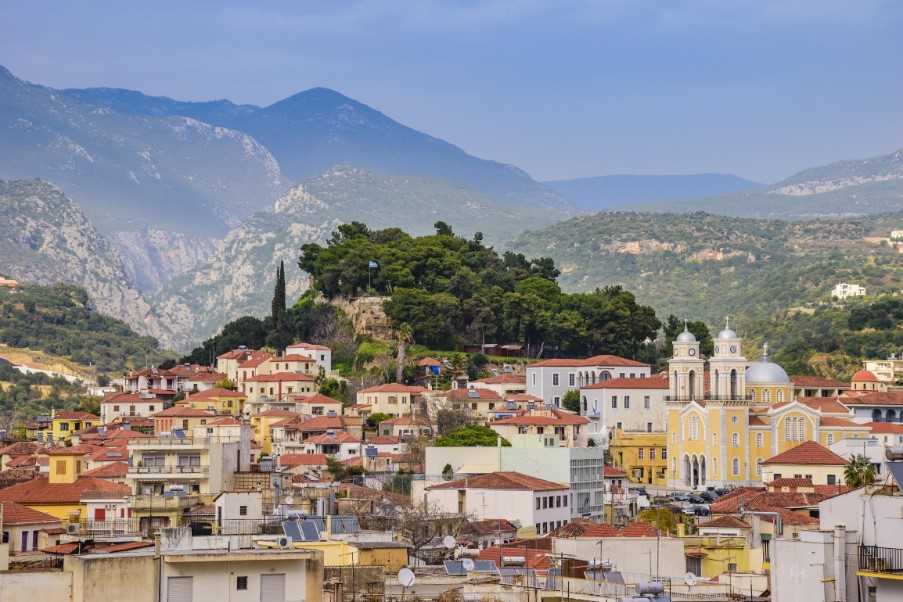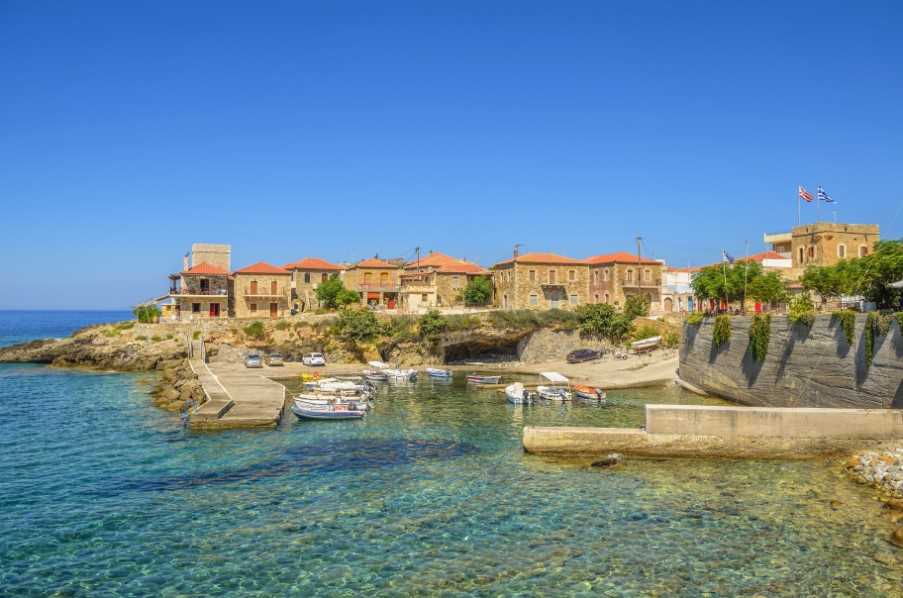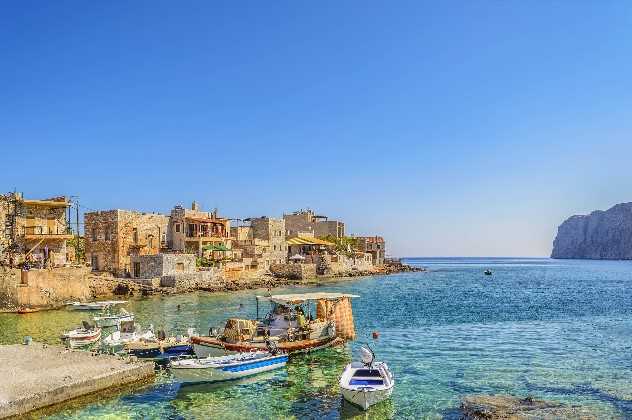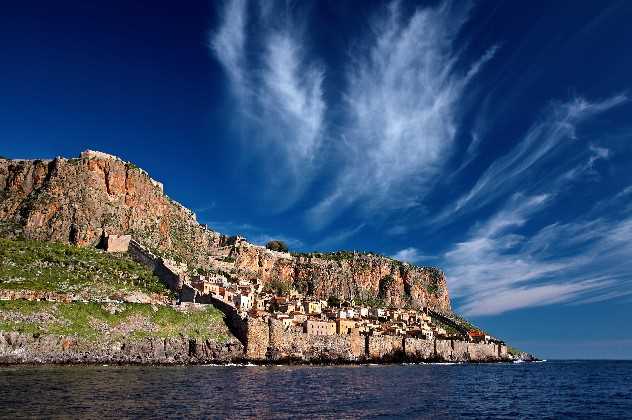Kardamili
The picturesque village of Kardamili, nestled at the entrance of the Viros gorge, holds a rich tapestry of history and natural beauty. Originally known as Skardamoula, the area was famed for its abundant cardamom plants. A striking feature of this village is the 'family complex' in Old Kardamili, which exemplifies the architectural style of the 'Outer Mani' settlements. These complexes were not just homes but fortresses, walled and fortified to safeguard the extended family clans. They served both as protective sanctuaries and as power bases, reflecting the turbulent times and the community's need for security and resilience. This blend of natural spice cultivation and robust historical architecture makes Kardamyli a fascinating destination with layers of cultural heritage to explore.
Kardamili, a town steeped in mythological and historical significance, is intriguingly mentioned in Homer's Iliad as one of the seven cities that Agamemnon promised to Achilles. This offer was meant to coax Achilles back into the fray of the Trojan War after his withdrawal due to a dispute. This ancient town, not just a footnote in epic tales, also hosts sites of deep historical roots such as the purported tombs of the Dioscuri, Castor and Pollux, near Old Kardamyli. These tombs, while unassuming in appearance, link the town to a rich mythological past. Another notable site is the church of Agia Sofia, perched atop a hill, offering breathtaking panoramic views. The journey to this serene sanctuary is a vigorous 50-minute ascent from Old Kardamili, rewarding visitors with both spiritual and visual solace, encapsulating the enduring allure of Kardamili’s landscape and its woven tapestry of mythology and history.
Patrick Leigh Fermor, a renowned British travel writer, was not only celebrated for his literary contributions but also for his valour during WWII as part of the Greek Resistance. In recognition of his efforts, he was granted honorary citizenship of Kardamili, a village where his beloved house is situated near Kalamitsi beach. This house, a beacon of historical and cultural significance, is currently managed by the Benaki Museum. Those wishing to explore the interiors of Fermor's residence need to schedule an appointment in advance through the museum, with visits permitted only on Mondays during the summer at a fee of 5€. In a touching tribute to another literary giant, the ashes of Bruce Chatwin, author of ‘In Patagonia,’ were scattered at the quaint church of Agios Nikolaos in Exochori, further cementing the area's appeal to literary enthusiasts and travellers alike.


